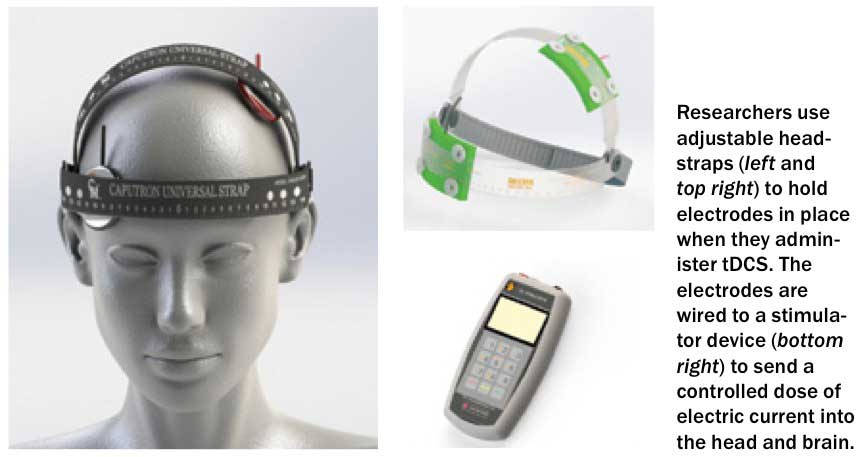Emphasis mine on “but over time it will also gradually rewire your neurons to prevent future attacks.” Very interesting considering the source, Marom Bickson. If you’ve been following the pop press on brain plasticity, you’ve certainly heard the phrase: “Neurons that fire together, wire together.” Could this be a meta-framework for thinking about tDCS?

Head band and controller sourced from CaputronMedical.com the green electrode/strap on the right is the Soterix EasyStrap (see below)
Future medications for brain disorders could be delivered through electrodes rather than pills
By Marom Bikson and Peter Toshev
The pharmacist guides you to a shelf of headgear, labeled
with different brain regions. She fits you for a cap, the underside of which features thin conductive metal strips, called electrodes, coated in adhesive gel to stick gently to your scalp.
The electrodes link to a slim cable that dangles from the back of the cap. She then hands over the key component of your prescribed medication: an electric stimulator.
Once a day for the next week you will don the headgear
and plug the cable into this device for a 20-minute dose of
electricity. Setting aside your trepidation, you give it a try in front of the pharmacist. At first you feel only a tingling sensation and then relief.
As you wear the cap, an electric current is traveling from
the electrodes, past hair, scalp and bone, into the brain regions responsible for your migraines. At first it merely blunts the pain, but over time it will also gradually rewire your neurons to prevent future attacks. The pharmacist explains that you will be free to carry on with your day—finish chores, watch television, go for a walk– with the cap on your head, and when the dose is up, the stimulator will simply stop running.
——–
When brain cells activate together, the connections among them grow stronger and more numerous. Cells that seldom fire in concert gradually lose their linkages. Adding tDCS can therefore heighten the brain’s ability to rewire itself—its plasticity.
Source: http://neuralengr.com/wp-content/uploads/2014/10/samind_2014_11.pdf
See also: Zap Your Brain to Health with an Electrode Cap – Scientific American.
And: Giving the Brain a Buzz: The Ultimate in Self-Help or a Dangerous Distraction?
Soterix Accessories page. (I am not affiliated with Soterix or any other product mentioned on this blog).






